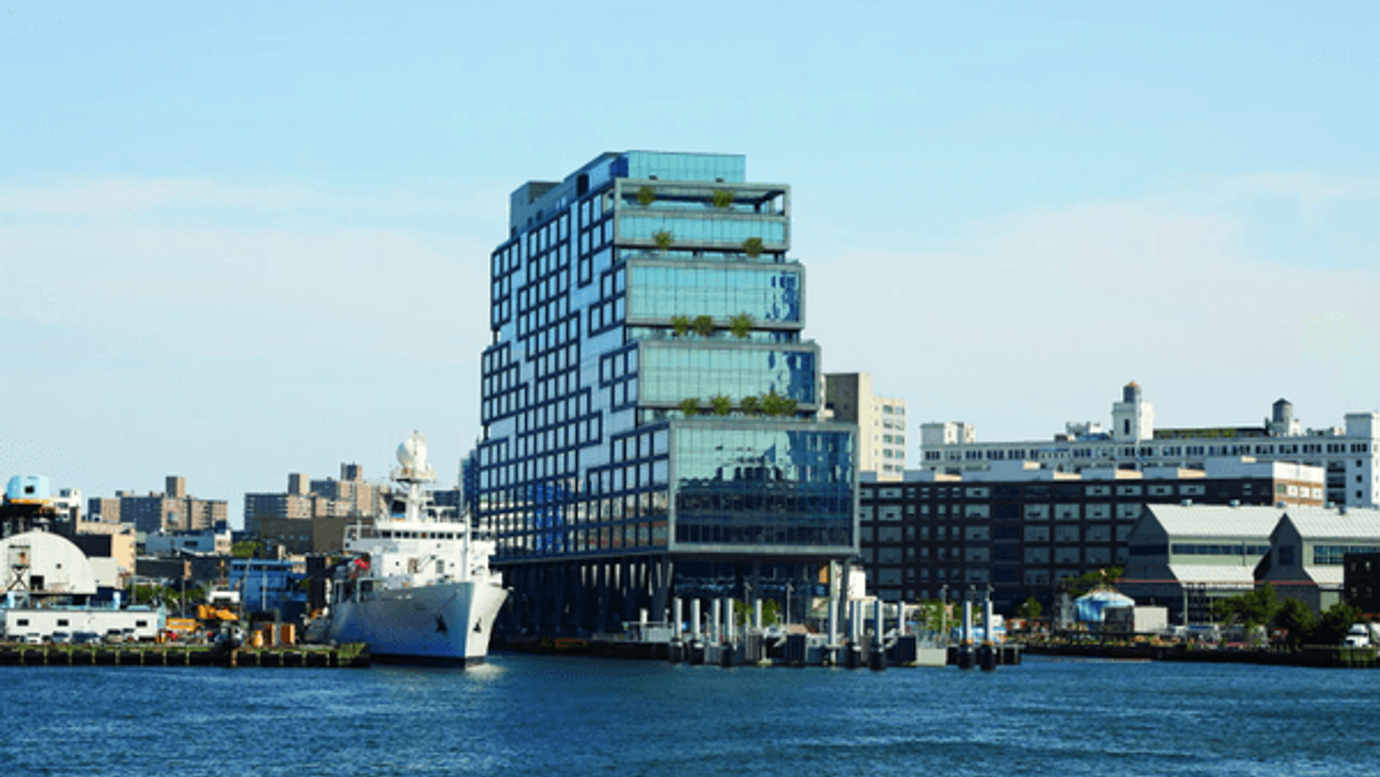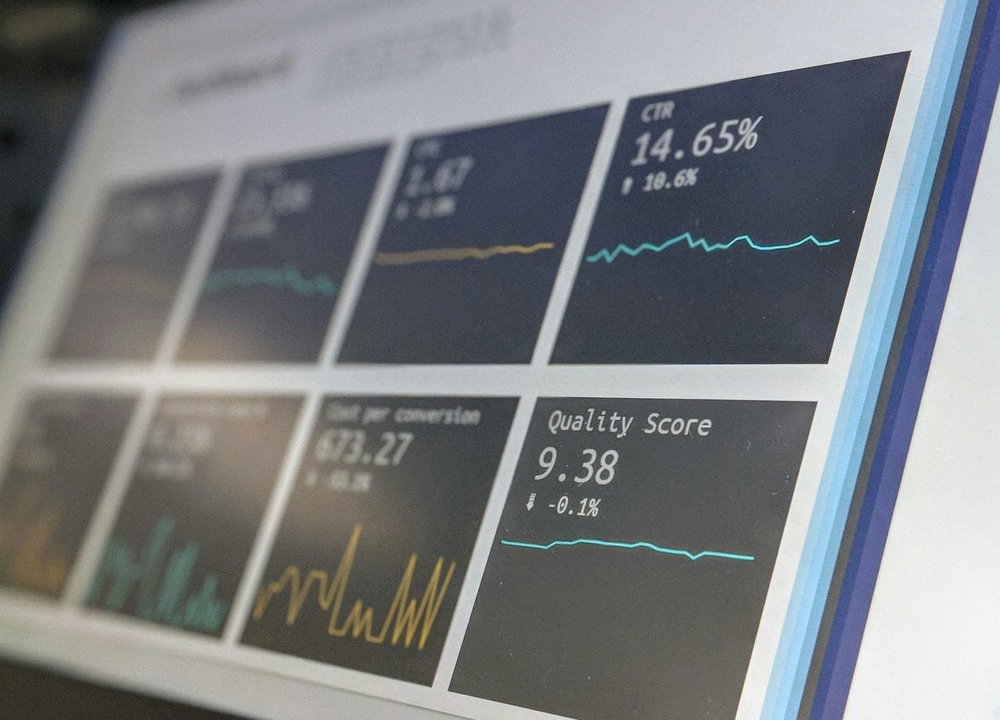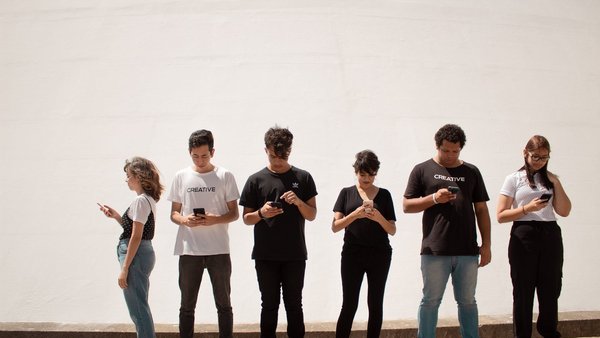‘My job was to give Huge a sustainable chance for the future’ /
Former Huge CEO Mat Baxter on transforming the creative agency business model
James Swift
/
(Pictured: Interpublic Group’s Innovation Hub in Brooklyn Navy Yard’s Dock 72)
At the end of January, Interpublic Group (IPG) announced that Huge’s chief product officer, Lisa de Bonis, was replacing Mat Baxter as CEO of the agency. For anyone who had read Madison Avenue Makeover, this was a big deal.
Michael Farmer’s book was a fly-on-the-wall account of Baxter’s efforts to save Huge from stagnation by reinventing the digital agency as a growth acceleration company that sold creative services as fixed-price products, and it arrived at a time when the industry was all ears for new ways to make money.
The debate over ad agency business models had never gone away, but it acquired new vigour in 2023. The economy was faltering and creative agencies had begun to noticeably underperform the other divisions within their holding companies, and the industry was starting to grok that generative AI was going to make some of the things they did easier, and consequently less valuable.
In an article published in January, we wrote that the argument for reforming ad agencies should not turn on what happens at Huge. That remains true, but Farmer’s book inevitably made Huge a totem of agencies’ struggle to find a sustainable business model, and a lot of people — us included — were anxious to see how its transformation panned out.
So, when IPG announced Baxter was leaving, just three months after the group’s CEO, Philippe Krakowsky, said Huge was among the digital specialty agencies that had produced ‘challenged results’ in Q3 2023, it felt like an inauspicious sign. We’ve been around long enough to know that when an executive says they’re leaving their post for ‘family reasons’ it can mean many things.
Having already interviewed Farmer, and also Caroline Johnson, the consultant who designed Huge’s business model, we were eager to get Baxter’s perspective on the turnaround job that he began in 2021.
Baxter is not an easy man to pin down for an interview. He joked — or possibly, confessed — that he was struggling to manage his schedule without an executive assistant. But Baxter is every bit as passionate and forthright as he is described in Madison Avenue Makeover... and considerably more sweary.
Over a video call on 8 May, he reiterated that he left Huge because of his desire to return, after 10 years in the US, to Australia, where all of his family lived, and he elaborated — off the record — on the circumstances that influenced his decision. He also talked to us about the state of the ad industry, its hope for the future, and the challenges of transforming a creative agency.
You went from running media agencies to leading a creative one. Were there any differences that you found alien or tough to navigate?
I'd been in media agencies for nearly 20 years and had run them both at the national level in Australia and the global level at Initiative. Media is where my craft lies and it's where, to be honest, my heart lies, in the sense that it’s where I got my start in my career. But there comes a time when you say, ‘Am I really stretching myself as hard as I should be? So that's what I did.
And to answer your question about how it’s different: [Creative agencies are] a much more culturally sensitive sort of organisation than media agencies, in the sense that media tends to attract, on average, a more rational sort of individual — much more numerically driven and analytically focused. Creative companies tend to have people who are less rational to follow the facts of an argument and always land on the side of those facts. A lot of their stuff comes from a feeling or an intuition, and a more abstract way of working and thinking. That’s a different sort of challenge as a leader because you’ve got to be much more sensitive to those personality types than you might in an equivalent media agency.
Mat Baxter
Did you have to change your leadership style to deal with those differences?
Absolutely. I’ve always shot straight and hard from the hip, and I’ve always had this philosophy of ‘be hard on the work not the people’. I had to be even less hard on the work in the creative environment than I was in the media environment, while still getting the same outcomes. You need to have a slightly more gentle hand than you might in a media agency environment.
What was the toughest part of the business transformation process for you?
Getting cultural alignment internally was the hardest thing. A lot of people talk about redesigning the agency proposition, the new financial roadmap and all of the structural changes, and they’re all very difficult components, but the single hardest thing for a company trying to disrupt itself is getting its people to be comfortable with that disruption, and to be willing to adapt to change.
For an industry that talks constantly to clients about being willing to be disruptive and open to change, about how media and consumers are always changing, it still amazes me how resistant to change agencies are.
Agencies are some of the most traditional and legacy-entrenched businesses on the planet. Think about the way an agency operates. For the last 30 years, it hasn’t changed that much. The channels in which [deliverables] appear and the formats in which they are designed has changed, but the underlying architecture and structure of the business, and the culture, is scarily similar to what it’s always been. There hasn’t been a wholesale reinvention of the industry, despite the fact that there’s been a wholesale reimagining of every other component on which that industry relies. There’s been a wholesale reinvention of the advertising ecosystem and channel ecosystem, there’s been a wholesale reinvention of how clients and marketing teams operate. There’s been a wholesale reinvention of technology, and the way that data and systems come together; there’s been a wholesale reinvention of how consumers navigate and purchase products. But the industry hasn’t adapted sufficiently to those challenges to be able to make a sustainable profit, but also continue to maintain its relevance with clients.
Think how influential ad agencies were in the 60s and 70s. They were the primary business adviser to clients. Now they’ve completely disintermediated themselves from that. They no longer have a seat at the table with the CEO of the business giving broader strategic and brand advice. That position has been usurped by business consultants. Ad agencies have been relegated to, at best, executional partners. At worst, they’re just vendors that procurement departments like to screw down on price.
What did you make of the comments last year by Publicis Groupe’s CEO, Arthur Sadoun, that creative agencies were no longer ‘accretive to growth’?
They haven’t been accretive to growth for a very long time — that’s not a revelation. The truth is that the creative agencies generally have been more obsessed with patting themselves on the back about how bloody creative they all are. It doesn’t matter how creative we are. It matters how much we grow our clients.
Mat Baxter
Look at Burger King. Burger King is lauded as this creative genius brand but they’re not selling any more Whoppers. They’re still one of the worst-performing quick service restaurants in the world. Their output, according to our industry, is the absolute apex of creativity, but the commercial performance that underpins it is abysmal. Those two things [creativity and commercial performance] are not deterministic of one another, and clients need to start seeing us take outcomes and results and growth seriously.
That’s why I think the monetisation models in the industry have been so glacial in their progression. If agencies were really confident that their performance delivered growth, they’d be willing to change their remuneration model to ‘you can pay us when we perform because we’re so confident we’ll help you perform that we’re not going to ask you for the money upfront. But instead of you expecting us to do it at 15% margin with an upfront fee, we want a 30% or 40% margin on a pay-for-success fee.’
If you had a business where you were really confident that you could deliver the results, you would be very quick to redesign and recalibrate your remuneration model to be more reflective of that growth. The reason that a lot of agencies get bullied by procurement departments and whittled down to cents on the dollar is because, at their core, they aren’t advocates enough for their own growth contribution.
Do agencies need to prove their contribution to revenue or profit growth to make that change, or is it enough for them to increase brand awareness, consideration and other metrics like that?
Ultimately it needs to be real growth in the top and bottom lines of the business. That’s the only growth that really matters. All the other growth measures are what I would just define as intermediary growth measures. Why do I care about brand awareness? Well, because some genius somewhere thinks that brand awareness is indicative of long-term performance. Now, we all know that there’s a very small relationship between brand awareness and performance. There are lots of brands in the world with 95% brand awareness who can’t make their sales numbers. Coca-Cola has very high brand awareness. Is Coke happy with the amount of Coke Red it’s selling right now across the world? No, they’re fucking not.
All these intermediary measures that we wax lyrical about as an industry: brand health, brand preference — they’re just soft measures. The measures that clients and boards and shareholders care about are, ‘Am I growing my revenue? Am I improving my profit?’. Agencies have to get used to having their conversations in that currency, versus all of these bullshit soft currencies that we defaulted to, either because we were too scared to tie ourselves to hard currencies or because we didn’t have the data to do the analysis.

Photo by Stephen Dawson on Unsplash
No media agency should be planning its media on reach and frequency in 2024. The only reason that reach and frequency was used as a measure was because there weren’t media mix models and there weren’t the datasets available that there are now.
I can guarantee that a sophisticated global client with a good media mix model understands more about the individual contribution of a specific media line item on their plan than the media owner from which they’re buying it.
Do those models take into account the long-term effects of advertising on a brand as well?
Data literate clients with the right platforms and processes in their businesses now know more about the relative contribution of every media asset in their ecosystem than either the media owners or, in many cases, the agencies.
Sometimes the agency is running the model, but a lot of the time clients are running those models externally — they don’t want the agencies marking their own homework. So now who is best positioned to optimise and maximise the efficiency of their media ecosystem? In many cases, it’s the client because they’ve got more data and more insight than their partners.
Do you think productisation is the best hope that creative agencies in general have of resisting commoditisation and returning to growth?
It’s not the only hope, but I think it’s a hope. Productisation is a circuit breaker to the people-and-hours loop that the industry has found itself in. I like it for a number of reasons. I think it simplifies what can often be quite a complex purchase. It’s like going into a clothing store where you go to the cashier and say, ‘I want a jacket’, and the cashier says, ‘Okay, here’s a swatch of all the fabrics, and you'll need a seamstress and a designer. Are you happy with that team, or would you like another seamstress?’ And you’re like, ‘Fuck, I don’t know. I just want a jacket.’ And then you start negotiating the price of all these different people that are going to make your jacket for you.That’s an oversimplified explanation of the concept, but it’s the basic premise.
That’s the benefit of selling products versus the constituent parts required to build the eventual output. It’s a much more simple way to purchase, and it’s much easier for the agency to manage because the agency can create a repeatable system to deliver the product and it can manage its cost base. And it can build a fixed price with a fixed margin and avoid debates about overheads and hourly rates.
But there are other options. You could move to a pay-for-performance model, where instead of charging for a team, you charge for a set of outcomes, and you put skin in the game by saying, you’ll only get paid if those outcomes are realised. You’ve got to be very confident that you’re good, and you’ve got to have a client that’s willing to play at their end of the bargain and put the right conditions in place for the success to occur. But that is an alternate model, and there are others.
I went down the route of productisation because it was the most pragmatic in the timeframe that I had, and in the circumstances that I had, and with the raw ingredients I had. And I was working in a network. Putting revenue at risk in the way that a pay-for-performance does within that environment presents some challenges. So, productisation was the way that we went.
Do you think the industry in general has much hope of changing its models and structures while still hitting the targets set by the holding companies?
No. Transformation takes time. Transformation is inherently distracting to the organisational mission, and transformation has a delayed revenue payoff. There's short-term pain for long-term gain. Agency groups are so beholden to the quarterly performance cycle that the notion of giving up [targets] for a couple of quarters or even a couple of years… look at IBM. It took IBM 15-plus years to transform from essentially a PC and software company into a consultancy.
The issue that the industry has got is like any legacy industry that has had a gravy-train product and margin.
I always use the music industry as an example. BMG, EMI, Sony and all these guys were making a lot of money off CDs in the 90s and early 2000s by absolutely fleecing their customers for a huge margin. Then they started to see their assets digitised by Napster, LimeWire and all the other P2P sharing sites. They knew they had to move to digital formats to protect their positioning and secure the future of their business, but they were so addicted to the quarterly profits that CDs delivered that they could not wean themselves off the short-term profits and make the long-term investment to create what essentially Apple did. Now iTunes makes those guys look like minnows when it comes to music revenue.
One of the objectives of agencies adopting new models is to convince clients that they’re a different kind of business that commands different rates. That always sounded like the most difficult part of the process to me. How hard is it?
I’ve always said you never want to be the best house in a bad neighbourhood; you want to have a good house in a great neighbourhood. The problem with the ad agency neighbourhood is the house prices are pretty crap and the neighbours aren’t very good. So what I tried to explain to the business was that we’re not just going to renovate and have the best house in a bad neighbourhood, we’re going to actually move to the growth creation, consultant neighbourhood. Now, our house might be a bit smaller than it is today in the advertising agency neighbourhood, but that’s okay. We want to establish our roots in an up-and-coming neighbourhood where the values are going up. And as we get better, we’ll renovate our house and end up with a bigger house in an even better neighbourhood.

Photo by Handiwork NYC on Unsplash
Like any move, it’s a pain in the arse, and it’s disruptive. But over time you settle and you become used to that neighbourhood. Every neighbourhood has a different vibe and a different style, and we had to relearn how to live in a different neighbourhood. I’ll give you an example. When you live in the agency neighbourhood, everyone says yes to everything. When you live in the consulting neighbourhood, you say no to plenty of things. And you’re unapologetic about it. That’s not a natural behaviour in agency cultures. When I started to push people to say no [to things like breakdowns of teams and hours on a project] their heads would explode.
Mat Baxter
To your point, the hardest bit was not the external change, it was the internal change to do with the business and the culture. Clients are pretty astute and pretty single minded. They’ll work with whoever can make them successful. Once the client realises you can help them make their numbers, they don’t give a shit what the sign above the door says.
But they do care about performance. It’s amazing how many agencies do not actually know, scientifically, that what they do has an effect on what their client is expecting.
You came up with your transformation plan before generative AI tools really hit the market. Was that a spanner in the works for you?
It wasn’t a spanner, it was a validation that what we were doing was 100% right. If you’re selling people hours, the number-one thing that will erode [those numbers] is AI. If you suddenly need 20% less people hours because of AI, do you think procurement is going to let you get away with still charging for that 20%?

Photo by Solen Feyissa on Unsplash
So AI was just another nail in the coffin of the business model. Actually, it’s like 50 nails around the edge of the coffin. I’ve heard some industry leaders, not many, but a couple, say that AI is going to be a boon for the industry. It’s like, ‘stick your head in the sand even further, guys’. Of course, it’s not going to be a boon. It’s everything that you’re not.
Looking back, how do you feel about your time at Huge?
Oh, look, I’m super proud of what I achieved when I was there, and the company is on a journey that does not finish with me. My responsibility while I was there as the CEO was to give Huge a sustainable chance for the future, and I feel I did that. I diagnosed the business that had consistently not gotten the performance it needed to be a growing company, and I made the decisions that I needed to, to put it on a course that has a lot more going for it in the future than the one that I inherited.
If transformation was easy, nobody would be getting into the trouble that they’re in now, right? Transformation is hard and it requires a cultural disruption that unsettles people, and that can make you unpopular in the business in the short term because you’re seen as coming in and fixing something that ain’t broke.
The average employee doesn’t see the things that the leaders see in the numbers and in the trajectory of the company, so a lot of people think things are better than they are. My job was to safeguard the future of the business, and make sure that I do it as responsibly and effectively as I can. And Lisa [de Bonis, who has replaced Baxter as CEO of Huge] continues to do that. She was the chief product officer, and when I spoke to IPG about the obvious successor to me, I said the only person that is right to continue to push this forward and continue to deliver this transformation is Lisa.
But like Michael [Farmer] said, we probably won't know the full impact of [the transformation] for a long time. The early signs are good. The average value per sale was up significantly. It’s about a 1.5 to 1.8 multiple on the average value under the people-hours structure. Margin was significantly up on product sales versus legacy service sales. There were all of the early signals of the product strategy delivering some of the outcomes that it promised. But you’re turning a company that’s 100% service based to 100% product based. That sort of pivot doesn’t happen in a year or two. It happens over many, many, many years.
Like the cut of our jib? /
Contagious IQ is packed with more than 12,000 case studies analysing the most innovative and effective work around the world.
Filter your searches by categories like product sector, business challenge to find best-in-class campaigns that will inspire you to crack that brief or win that pitch, fast.
Our online intelligence platform also includes in-depth strategy interviews with the teams behind the work, brand case studies, summaries of cutting edge marketing research, and much, much more.
Click here and we’ll show you around.
Want more of the same? /
We don’t just write about best-in-class campaigns, interviews and trends. Our Members also receive access to briefings, online training, webinars, live events and much more.








